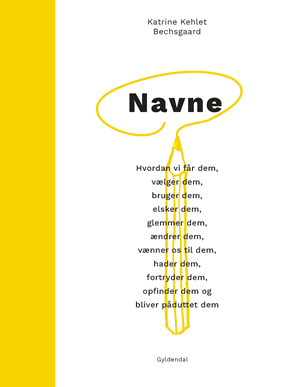av Linnea Gustafson
Under semestern blir det ofta mer tid att tänka än under övriga året – även om det kanske borde vara tvärt om. Den här sommaren tänker jag mycket på färger, namn och smink. Hur namnges sminkprodukter? Hur hänger namnen ihop med färgerna och företagens övriga marknadsföring?

Sminknamn är en så ny företeelse att nagellack och läppstift för ungefär tio år sedan bara bar nummer, medan de nu för tiden heter allt möjligt t.ex. Stronger than you Think, Five Star Chic, Intense. Eftersom det är marknadsföringsavdelningarna som namnger går det att sluta sig till att namngivningen är ett tillfälle att marknadsföra produkterna. Det här är rimligt då den berättelse som ett företag skapar om sig och sina produkter, och som inkluderar namn, är en del av varumärkesbyggandet.
Marknadsföringsstudier visar att det kan finnas en koppling mellan varumärkets identitet och mänskliga personlighetsdrag. Ju större överenstämmelsen är, eller uppfattas vara, mellan de karaktäristiska som beskriver varan och kunden, ju mer attraktivt framstår varumärket. Vissa varumärken tenderar t.ex. att uppfattas som antingen mer manliga eller kvinnliga, vilket har med såväl betydelsen som ljudbilden att göra. I det sminkmaterial som jag tänker på i sommar framträder två tydliga erbjudanden om en sådan här typ av identitet: den exotisk-lyxig-romantiska och den inhemsk-ekologisk-hållbara.
I grunden är sminknamn hämtade från en värld av skimmer, flärd, lyx och attraktion, eftersom detta ligger i själva varans karaktär. Namnen har ibland ett tydligt konsumentperspektiv och ”talar” till sin köpare, t.ex. Be Courageous, Follow your Dreams och Hello Beautiful, eller uttrycker en otydlighet om det är produkten eller konsumenten som beskrivs, t.ex. Fearless, Genius, Gold Digger, Modesty, Provocative och Sunseeker. Namnet kan indikera att konsumenten erbjuds allt från en magisk, romantisk sagovärld till en spännande och framgångsrik personlighet. Det är dock oklart om sminkprodukten skänker dessa egenskaper till sin bärare eller om produkten passar bäst för en bärare som redan besitter dem.

Sminknamn som förmedlar en inhemsk-ekologisk-hållbar identitet består ofta av ett beskrivande namn som fokuserar produkten snarare än konsumenten, och ambitionen tycks vara att namnet ska förmedla en så objektiv varudeklaration som möjligt. Det mest objektiva namnet är troligen ett färgnamn, t.ex. Mörkröd. Fokus vid namngivningen ligger på det inhemska, lokala och välkända som ger bibetydelser som kan uppfattas som stadiga, traditionella, välgjorda och hållbara. I många fall sammanfaller hållbarhetsperspektivet med språkvalet så att namn på svenska signalerar en större grad av hemvävt och kvalité. Det förekommer också ofta metaforer som går att koppla till det inhemska. Det rör sig om växter, bär, frukt, blommor osv. som växer i vårt land, t.ex. Hjortron, Ingrid Marie, Krusbär, Körsbär, Lingon, Nypon, Vinbär, Prästkrage och Vitsippa.
Detta är några av de tankar jag tänker i sommar. När jag har tänkt färdigt kommer det att gå att läsa om resultatet via den här hemsidan: https://www.norna.org/

